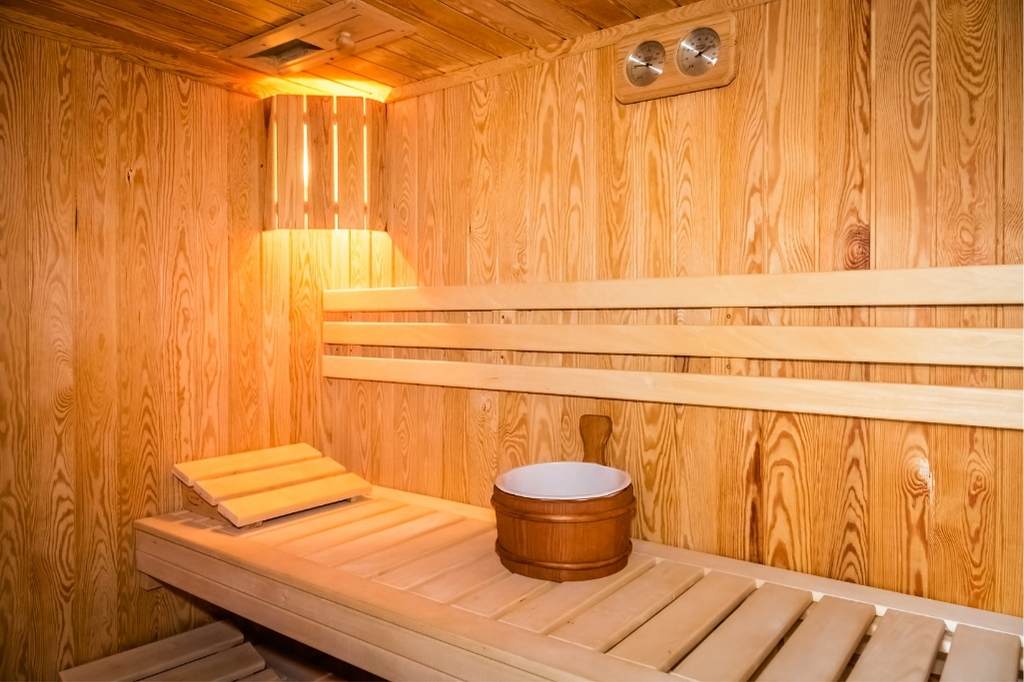Whether you are an elite level athlete or a regular person engaged in an exercise regime, how quickly and how successfully your muscle fibers recover after a workout is important. Most people know how important exercise is, and yet, we tend to underestimate how important recovery is to the process of building muscle mass.
The irony of exercise is that its effects serve to break down the muscle fibers in the body, and it is through active rest and regeneration that we actually see the visible results of all the hard work. With all exercise and no recovery, you will not benefit from the intensity of the energy output.
A must on your to do list is take some down time and maximize muscle recovery through either, but ideally both, heat therapy and cold therapy. Interestingly, plunging yourself into an ice bath creates a similar cascade of internal biochemical reactions that helps to repair the muscles that have been broken down as a long hot bath, or sauna. For most folks the idea of getting into a warm sauna is much more alluring, and practical than creating an ice bath. You can always do both!
So how exactly do saunas help in muscle recovery?
- Increase the production of Heat Shock Proteins (HSPs)
- Improves circulation
- Detoxification of lactic acid build up from exercise
- Improved production of Nitric Oxide
How Far Infrared Saunas Improved Overall Performance In Young Male Athletes
The National Institute of Health published a study performed on ten healthy young male athletes who regularly used the bench press, isometric leg press, and high intensity endurance exercise training. The participants took a short 20 minute far infrared sauna at low heat after their workouts ten times, and the results on muscle recovery were outstanding. The participants showed significant reduction of lactic acid in the body’s system, an increase in oxygenation of the blood, and a decrease in overall Ph levels in the blood.
“In conclusion, deep penetration of infrared heat (approximately 3–4 cm into fat tissue and neuromuscular system) with mild temperature (35–50°C), and light humidity (25–35%) during FIRS bathing appears favorable for the neuromuscular system to recover from maximal endurance performance. FIRS bathing is a very light loading for the body and provides a comfortable and relaxing experience.” (1)
You may not be a young male athlete, however the results of this study demonstrate universally positive effects on the body from taking far infrared saunas after working out. Lowering the Ph level in any human body is generally important for creating a healthy biosphere, an uptake in oxygen creates healthier blood, and detoxification from harmful lactic acid (which is produced during exercise), are all collectively positive for most humans.
You do not have to use just a far infrared sauna to improve muscle recovery, in fact other studies demonstrate that traditional saunas, as well as full spectrum infrared saunas also have benefits in muscle recovery. The great thing about a far infrared sauna is that it is generally speaking the most affordable for in home sauna use!
Why The Production of Heat Shock Proteins Are So Important For Muscle Recovery
There are thousands of different types of Heat Shock Proteins (HSPs), but there is one very special breed when it comes to repairing depleted muscle fibers after a workout: HSP 70.
According to a study published by NIH:
“The stress-inducible 70-kDa heat shock protein (HSP70) is a highly conserved protein with diverse intracellular and extracellular functions. … This upregulation of HSP70 contributes to the maintenance of muscle fiber integrity and facilitates muscle regeneration and recovery.”
Most of us know that exercise, whether it is weight lifting or long distance running, breaks down muscle fibers, but it is during rest that the muscle fibers repair themselves and ultimately are enhanced and strengthened.
Heat Shock Proteins are produced not only in elevated temperatures, but also in very low temperatures such as an ice bath or a cryotherapy chamber. Traditional saunas, hot baths, or hot tubs, far infrared, and full spectrum infrared saunas are all excellent tools to improve the uptake of HSP70 which contributes to the repair of muscle fibers.

Not only are the increased production of HSPs important for muscle repair, but also play an integral role in the improvement of the quality of bone marrow. With any high impact physical activity there is always the possibility of increased pressure on the skeletal structure.
By taking a sauna after a workout or shortly thereafter, you are able to build up a healthy skeletal structure so that you can continue to reap the benefits of regular exercise. (2)
Improved Circulation and Detoxification For Muscle Recovery
The final two ingredients that make sauna bathing so important for muscle recovery are the improvement in blood circulation and detoxification of potentially harmful biochemicals produced during exercise such as lactic acid. By elevating the internal temperature of the body in a sauna, the entire cardiovascular system is engaged to begin the sweating process.
When the cardiovascular system is engaged and blood begins to flow through the heart and throughout the body, it is as if the muscles that have stressed during the workout are being fed all of the nutrients they so desperately need in order to begin the recovery process.
The circulatory system is similar to the topography of river ways on a land mass. The more fluid they flow the more access the entire area has to all of the nutrients that are carried in the blood.

Further, as an individual begins to sweat profusely in either an infrared sauna or a traditional sauna, the detoxification process begins. It is critical that lactic acid gets moved out of the body through elimination of some form, if not it can get stored in the body and cause ongoing issues with the endocrine system. (4)
The particularly special aspect of sauna bathing is that while a whirlwind of microscopic changes are taking place in the body, the individual is actively relaxing and resting, so that the body can do what it does best, heal.
Use An Infrared Sauna or A Traditional Sauna For Faster and More Effective Post Workout Muscle Recovery
Everyone, ideally should be engaged in some form of physical activity, and even if you are not an elite level athlete, the process of recovery is as important as the exercise. Active recovery through sauna therapy may be the most effective and enjoyable means of rehabilitating muscles after a workout.
By using a sauna in conjunction with regular exercise the health benefits are exponential. For those looking to build muscle and get back into the gym sooner, taking a sauna after workouts will improve recovery and rebuild broken down muscle fibers faster than just resting without heat.
Athletes looking to improve their muscle recovery between workouts, would do well with a full spectrum infrared sauna. The scientific data surrounding these types of saunas is resoundingly positive for the elite level athlete. (1)
Whatever your current lifestyle is, getting into the sauna, any kind of sauna will do a world of good for your skeletal and muscular system, as well improving overall cardiovascular function, and muscle fiber repair!
Sources Cited:
- https://www.ncbi.nlm.nih.gov/pmc/articles/PMC4493260/
- https://www.ncbi.nlm.nih.gov/pmc/articles/PMC3822288/
- https://pubmed.ncbi.nlm.nih.gov/31950931/
- https://health.clevelandclinic.org/why-we-sweat/


